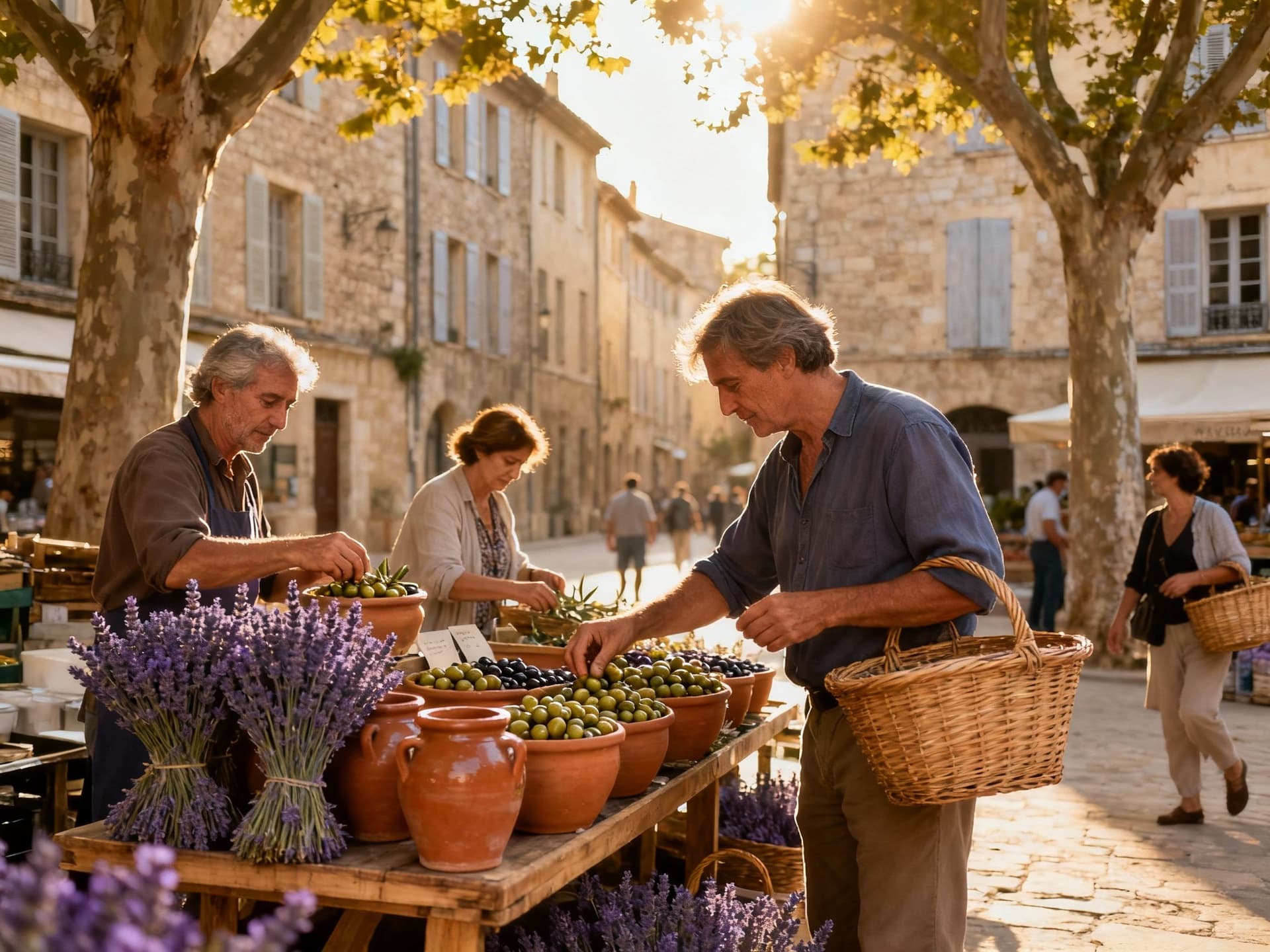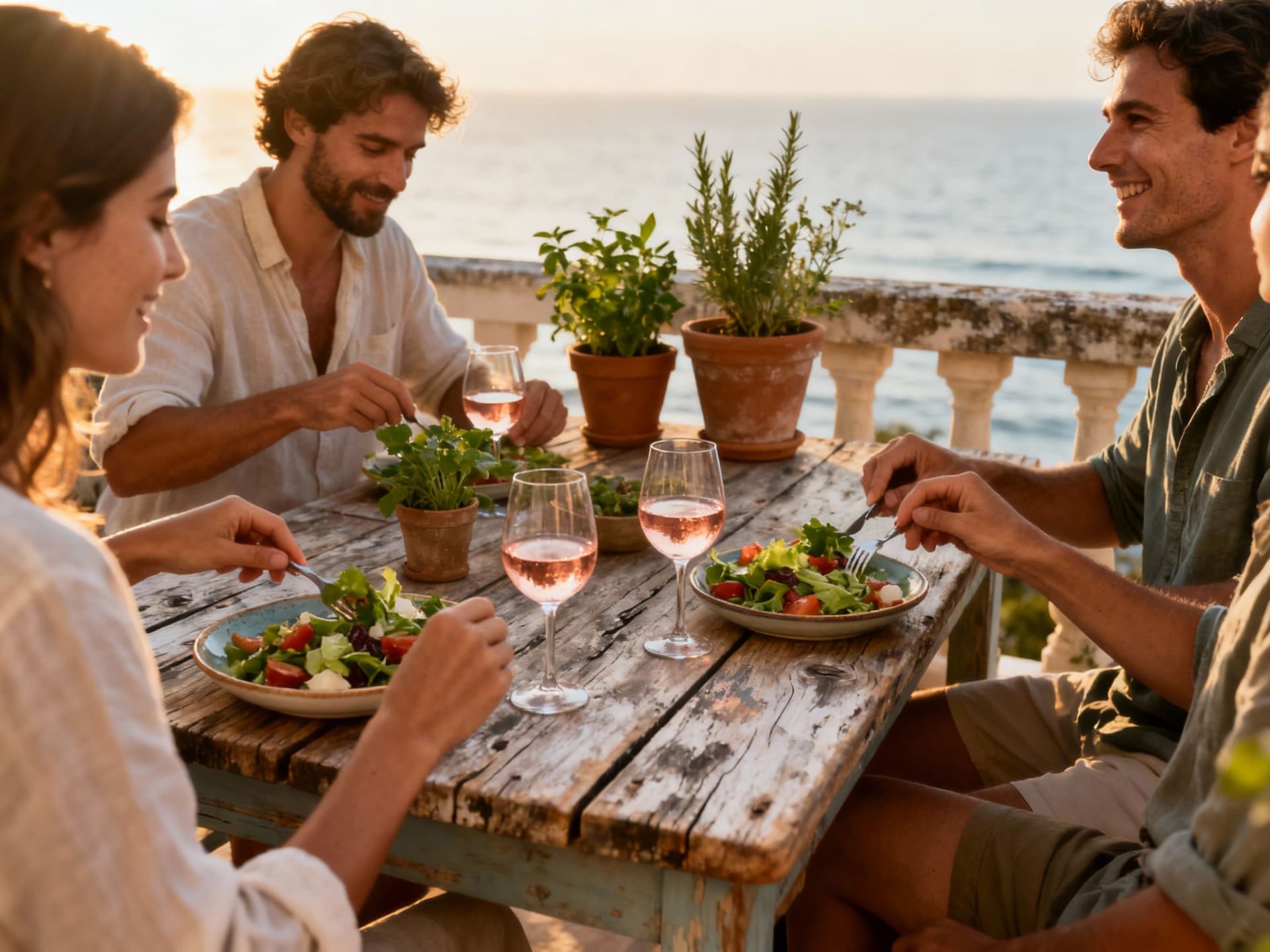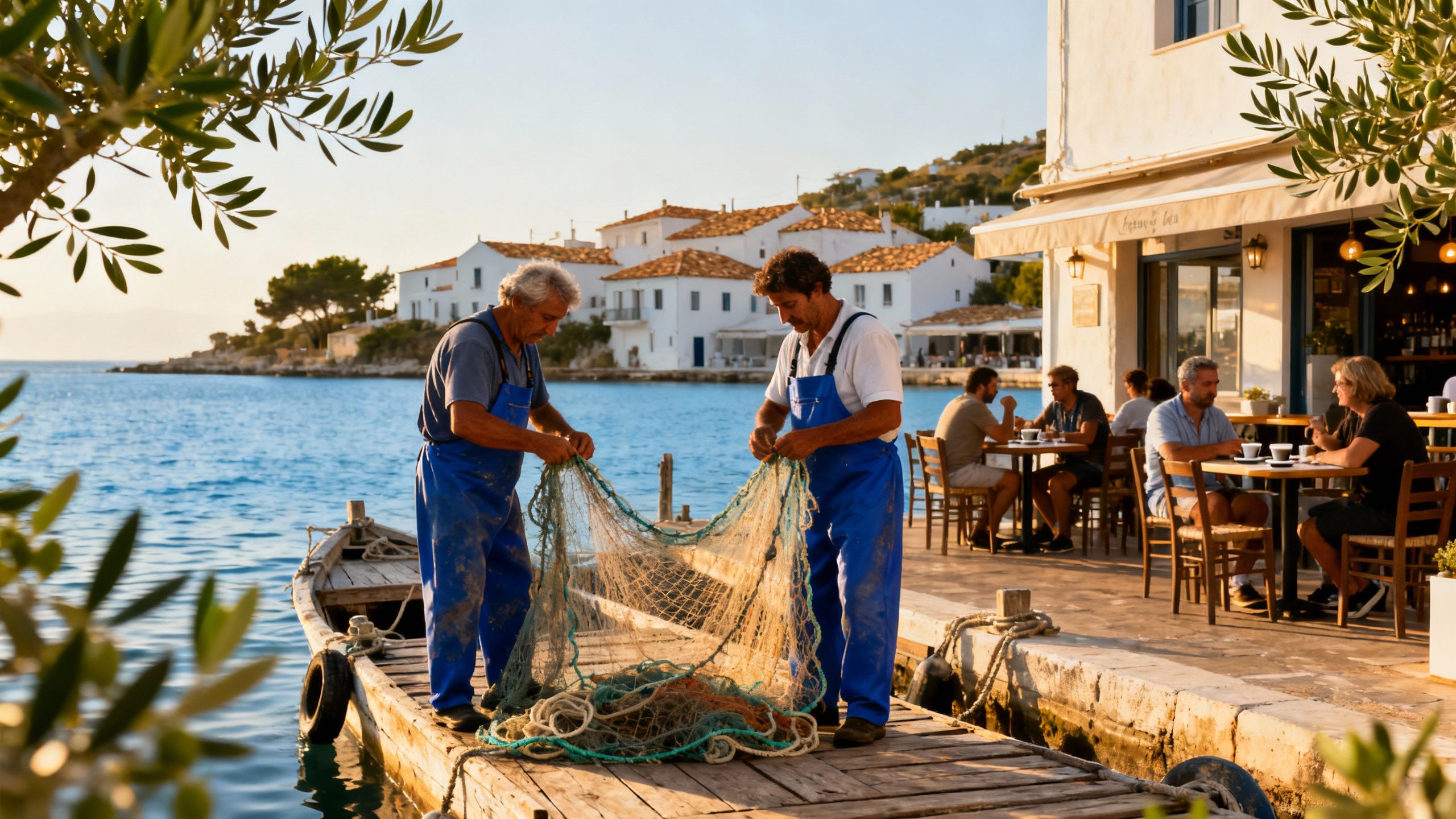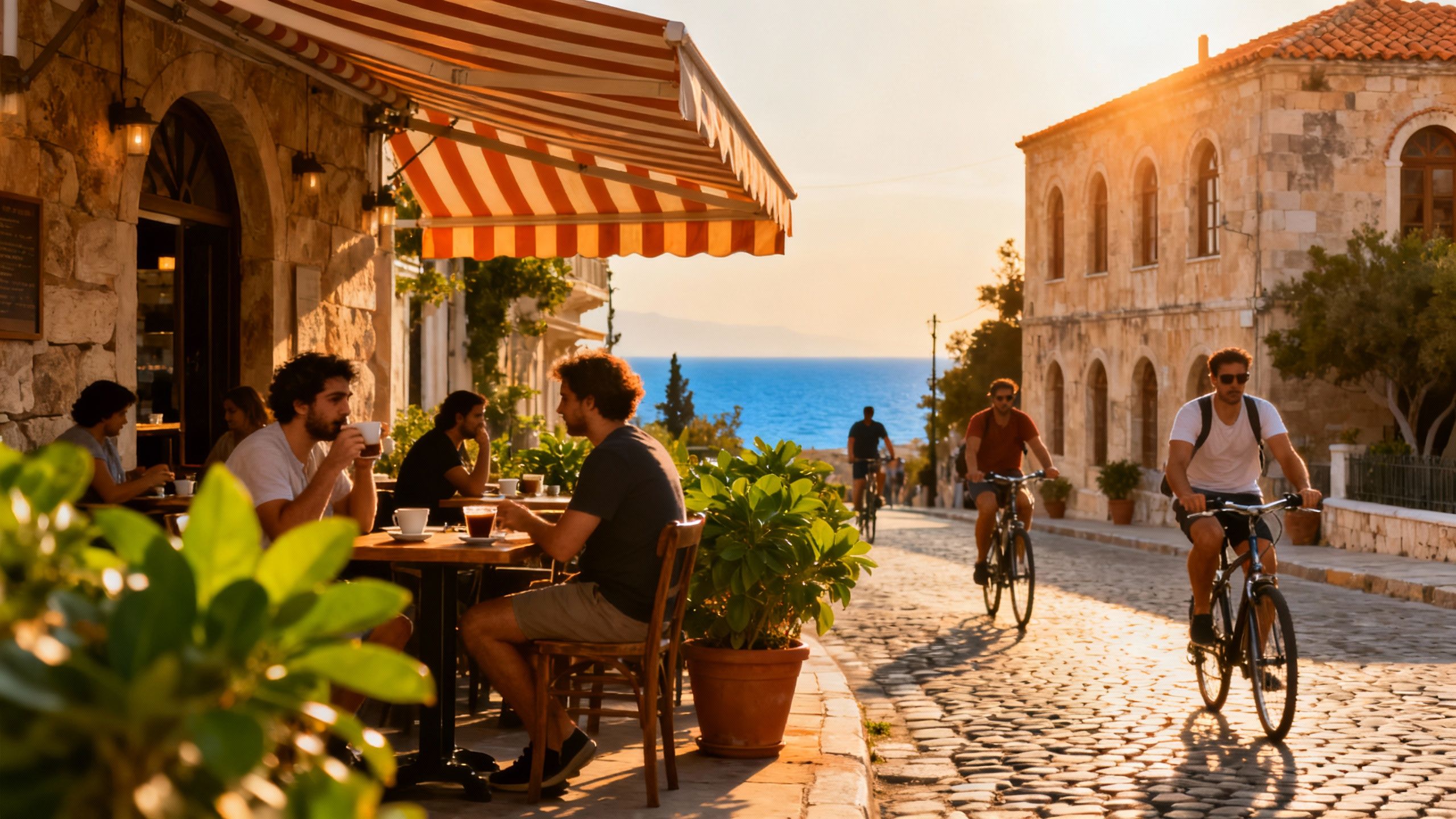The Summer Illusion: Why House‑Hunting in France Misleads
The summer visit misleads many buyers: market and life rhythms differ off‑season. Visit in spring/autumn, verify energy diagnostics and local transaction data (INSEE).
Imagine a summer market in Provence: sun-warmed tomatoes, a baker folding warm fougasses, and a wicker basket swinging alongside you as you choose olives. France offers that slow, sensory rhythm — morning cafés, evening aperitifs, village fêtes and long walks beneath plane trees — a life stitched to seasons and local craft. But the moment many international buyers first step into this dream is during July or August, and that timing hides important truths about how the market — and daily life — really behaves.
Living the French rhythm

France is not a single tempo: Paris hums with bicycle couriers and café chatter, coastal towns pulse with yachts and seafood stalls, and inland villages keep age-old craft alive. Your days here can be marked by market hours, boulangerie queues, and the slow return to life after a long déjeuner; these rhythms influence which property will feel like home — a shuttered stone house that welcomes afternoon shade versus a sun-filled apartment above a bustling rue.
Neighborhoods that teach you how to live
Take the old port districts of Nice (Cours Saleya) where morning markets scent the air with citrus and socca, or the Marais in Paris where narrow streets hide tiny ateliers and second‑hand bookshops. Each neighborhood shows you a local way of living: where to sip espresso, when shops close for lunch, and whose hands craft the local cheeses. Those details shape what matters in a property search beyond square metres.
Food, craft and seasonal life
Markets are calendars: truffle season in Périgord, lavender harvests in Drôme, oyster festivals on the Atlantic coast. Local artisans — a miller, a potter, a winemaker — are part of daily conversation. Buying here means buying into seasonal cycles: a garden that thrives in spring and sulks in August needs different stewardship than an evergreen courtyard in Brittany.
- Daily and seasonal lifestyle highlights: • Morning marché at Cours Saleya (Nice) and rue Cler (Paris) • Evening apéritifs on Place du Palio (Aix‑en‑Provence) • Lavender fields of Drôme and Périgord’s weekend truffle markets • Coastal promenades in Biarritz and oyster huts in Arcachon • Village craft ateliers in Uzès and Vézelay
Making the move: practical realities behind the romance

Here’s a reality check: national price trends shifted in early 2025 after a period of stability and slight decline, so timing and region matter. A summer visit can feel deceptively buoyant — full terraces and packed markets make popular towns seem permanently vibrant. Yet INSEE and national notaries show price rebounds in Q1 2025, driven by activity that often concentrates in spring and autumn viewings, not high‑season tourism months. That mismatch can mislead buyers about demand, price and lived-in noise levels.
Property types tied to lifestyle
Stone village houses with thick walls offer cool interiors in summer and a need for retrofit to meet modern insulation standards. Coastal villas promise light and sea breeze but call for salt‑proof materials and storm‑aware landscaping. Urban appartements offer easy access to cafés and culture but are quieter in August when Parisians flee. Match type to seasonality: do you want a place that breathes in August or one that welcomes morning frost and quieter months?
Local experts who align lifestyle with technical know‑how
- Steps to a lifestyle‑fit purchase: 1. Visit off‑season (March/April or October) to see real neighbourhood life and maintenance needs. 2. Ask about construction materials and ask for recent energy diagnostics (DPE), not just photos. 3. Tour properties at different times of day to assess noise, light and market rhythms. 4. Meet local artisans or neighbours to understand community stewardship of shared spaces. 5. Check public transport and seasonal services — bakeries, bus lines and clinic hours change with the calendar. 6. Request recent transaction data for the exact commune from notaires or INSEE to compare summer impressions with market reality.
Insider knowledge: what expats wish they'd known
Expat stories often begin with the romance and later settle into the work of stewardship: navigating local school registration, learning municipal rhythms, and caring for old roofs and gardens. Inflation and service costs influence living budgets, and energy renovations are frequently the unglamorous step that makes a seasonal house comfortable year‑round. Knowing how local services scale with tourism seasons prevents surprises.
Cultural rhythms and community integration
The French slow‑time habits — long lunches, nightly shop closures, and municipal fêtes — are part of the charm but also shape daily logistics. Learning a few phrases, showing up at the weekly market, and supporting a local artisan are small social investments that accelerate belonging. For many buyers, the neighbourhood you choose defines the life you lead more than the square metres.
Long‑term lifestyle stewardship
Think beyond purchase to seasons, maintenance and ecological upgrades: passive cooling through shutters, native plant gardens that reduce mowing and irrigation, solar-ready roofs for future panels. These choices protect comfort and value across years. A home here is stewardship — it ages with landscape, not against it.
- Practical red flags and checks: • Don’t rely on high‑season impressions — check off‑season occupancy and services. • Confirm energy performance (DPE) and likely retrofit costs. • Ask about coastal erosion or flood maps for beaches and estuaries. • Clarify communal maintenance duties in villages (street cleaning, shared wells, chemins). • Verify recent transaction prices with local notaires rather than relying on tourism‑era listings.
If you want the sunlit market but not the seasonal noise, plan visits in spring and autumn, tour properties at breakfast and after dinner, and lean on agents who live the rhythm (they’ll know which cafés close in August and which boulangeries keep ovens lit year‑round). France rewards patience: buying with the calendar in mind leads to a home that fits the life you imagined and the one you’ll actually live.
Dutch property strategist who helped 200+ families find sustainable homes in southern Europe; expert in legal pathways and long-term stewardship.


